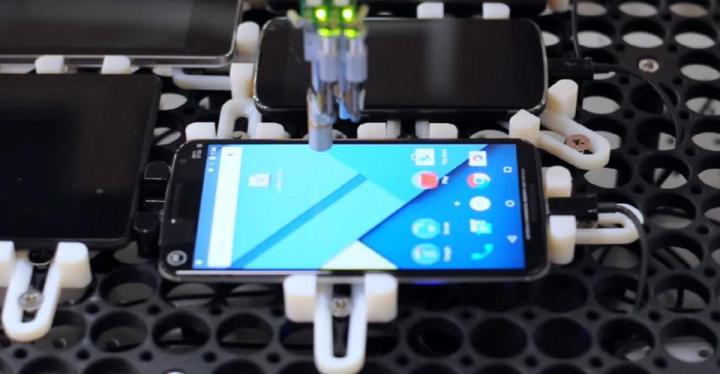
Chrome TouchBot, the product of Finnish design company OptoFidelity, is responsible for testing Android and Chrome OS devices for touchscreen lag. It measures the delay between input and response using high-speed cameras and a dexterous mechanical arm that mimics a user’s swiping, tapping, and pressing. If the arm’s conductive cylindrical tip encounters any issues — longer-than-average lag time or failure to register taps, for example — the subject of the test is set aside for further analysis.
Google seems intent on reversing a historical trend. In 2013, cloud streaming company Agawi recorded an iPhone 5 response time nearly twice as fast as the Android flagships at the time, the Galaxy S4 and HTC One (M7). “App responsiveness is judged by how quickly the app can respond to your inputs,” said Rohan Relan, cofounder and CEO of Agawi, in an interview with Venturebeat. “Smartphone with touchscreens that have [less lag] feel snappier. This is why, to many users, the iPhone keyboard feels more responsive than an Android phone keyboard.”
But better touchscreen responsiveness has benefits beyond making devices and apps feel speedier. Paul Dietz, a researcher at Microsoft’s Applied Sciences Group who prototyped a display with a 1 millisecond response time, said it changes your perceptions around the on-screen buttons you’re manipulating. “You start to have things actually feel like a real physical object,” he said in a video.
Touchscreens with sub-10 millisecond lag times aren’t yet feasible, but Google’s helping along efforts by releasing Chrome TouchBot’s source code and latency tests. If you’d like to subject your own tablets, laptops, and smartphones to rigorous testing, head on over to the Chromium page to get started.


